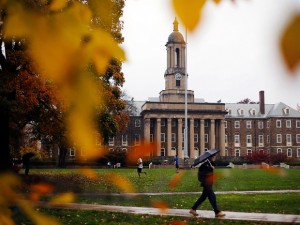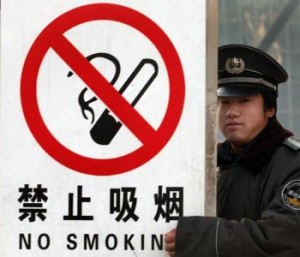Archives: November 2015
Paying Student Loans by Travelling
Virtually all Canadian post-secondary students understand the struggle of looking after their finances while attending and after attending school. The majority of students borrow student loans that are worth up to tens of thousands of dollars; these debts often continue to haunt students’ lives in their 20’s, 30’s, and beyond.
The idea of allowing students to use travel points to repay their loans is an excellent idea not only for the students, but for the economy and society as a whole. While students have another method to help pay off their debts, airline companies benefit by increased incentive to travel and the government could collect outstanding debts with no extra cost to taxpayers. The decision to use travel points to repay student loans can only spell a win-win-win situation.
Airline Fees About to Go Sky High
Canadian travellers should prepare for lift-off as airlines begin to pile on new fees for their services. Starting Jan. 5, Westjet and Air Canada will be implementing several new fees that travellers will be required to pay; some of which include extra bagging check fees and fuel charges.
While frowned upon by the general public, the decision to increase flight fees is an excellent choice from a business standpoint. The decision will undoubtedly only increase Air Canada’s profits. The fact that Air Canada has virtually no competition and provides an essential service to the economy makes this a smart move on the company’s part, as Canadian consumers still have no alternatives for international flight. Not only is this market almost entirely dominated by Air Canada, entry into the market is extremely difficult. Consumers have virtually no option available to them other than express their dissatisfaction with the hike in fees.
Air Canada’s assertion of their market dominance is also done in a way that doesn’t cause a massive uproar; unlike the man who recently raised the price of an HIV drug by fifty times its original price. This tactic would minimize the amount of backlash it would receive if it had piled on all its plans for fee increases at once.
Sources:
Canadian travellers face extra passenger fees from some airlines in New Year
http://www.cbc.ca/news/business/air-canada-ceo-says-extra-baggage-fees-fuel-charges-essential-to-airline-profit-1.2983611
http://www.cbc.ca/news/business/airlines-pile-on-new-fees-and-even-more-charges-lie-ahead-experts-say-1.3323044
Tesla’s Problem….?
Tesla Motors Inc., the American automotive and energy storage company, has recently recalled all of its Model S Sedans after discovering a seat belt deficit in one of its consumers’ cars. The recall is the company’s largest, encompassing over 90,000 units.
The decision was made based off of a single report, and is believed by Tesla to be a simple manufacturing error. At first glance, it may seem absurd to how Tesla would go to such incredible lengths to make up for such a seemingly small and uncommon event. Also, many would assume that the recall would cause a negative impact on Tesla’s reputation.
However, Tesla’s actions show industry awareness and employ marketing strategies that would benefit itself, despite the possible losses incurred by the company. The timing and execution of the recall are done under ideal circumstances. Furthermore, just a few months ago, the infamous Volkswagen scandal caused irreparable damage to the automobile brand by exposing untrustworthy colors. By recalling all of its Model S Sedans after a single report of a seat belt issue, Tesla is marketing the fact that it truly cares for its consumers and is concerned about issues apart from profits. Unlike Volkswagen.
While this marketing tactic may be costly and seemingly pointless, Tesla’s strategy may prove critical during such a delicate time period for the automobile industry.
Sources:
http://www.bloomberg.com/news/articles/2015-11-20/tesla-to-recall-90-000-model-s-cars-to-check-front-seat-belts
http://www.cbc.ca/news/business/tesla-recalls-all-model-s-sedans-to-fix-seatbelt-defect-1.3328058
Asia: Lighting up or Lighting down?
Take a walk down a road through any major Asian city and the widespread presence of smoking will become clear as day. At 2.5 trillion units in circulation, China alone produces nearly half of all cigarettes in the world. To some, the habit of smoking has become a part of their culture. To others, a plague.
However, smokers in Asia may soon find themselves reconsidering their habits. A series of campaigns across many Eastern countries have taken up arms against smoking, potentially spelling havoc for the tobacco industry. While China implements harsher penalties and bans on smoking in specified areas, South Korea enacts a large cigarette tax that nearly doubles the average costs of cigarettes.
Demand for cigarettes is expected to fall throughout Asia as a result of the new battle against smoking. Tobacco industries in Asia, particularly China, are usually dominated by one or very few producers with little competition.
While these industries generate significant revenue for governments(China’s largest producer of cigarettes is government-run) and create jobs for citizens, the detriments the consumers’ health is blatantly obvious. Companies should take into consideration the effects that their products have on their consumers, and government regulation plays a crucial role in making sure companies look after their consumers. With China being home to one-third of the world’s lung cancer patients, it is about time that the tobacco industry be faced with some harder directives.
Sources:
http://www.bloomberg.com/bw/articles/2014-12-11/the-chinese-government-is-getting-rich-selling-cigarettes
http://www.bloomberg.com/bw/articles/2014-11-28/now-starring-in-chinas-anti-smoking-ads-bill-gates
http://www.bloomberg.com/bw/articles/2014-11-28/now-starring-in-chinas-anti-smoking-ads-bill-gates



